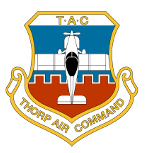jrevens wrote:
I won't miss the lead... picking it out of sparkplugs...
I'd like to figure out why some engines have such a problem. We frequently run a set of plugs 300-400 hours without cleaning or gapping and they usually aren't that dirty. Sometimes we only change half the plugs at that point but at 400 hours there normally isn't a lot of electrode left. On those engines we have the fuel pressure (fuel injected) cranked up to max and we never lean (almost never fly above 1800' msl either). I am in the middle of topping one of those engines at TBO. I used to annual a Tomahawk for a guy and his plugs would be packed full to the point of wondering how they ever made spark. I don't think the Tomahawk flew 30 hours between inspections. I will be inspecting a Skyhawk in the next week or so and his plugs are usually not to bad. Some of it is likely connected to power settings. The aircraft going 300+ hours between inspections spend very little time taxiing and generally only idle long enough to get some heat into the oil or bring the CHT back up into the green.
Of course, from what I can tell, the easy fix to lead on the plugs is to switch to electronic ignition and run the automotive plugs or burn mogas. I hate to give up the false sense of security the screw on spark plug leads give me but everything I hear and read concerning electronic ignition is great. Some can even be hand propped if you have a 9 volt battery handy (my ANR uses 9 volt).
I don't think we will ever be free of carbon build up. Even modern car engines get some.







